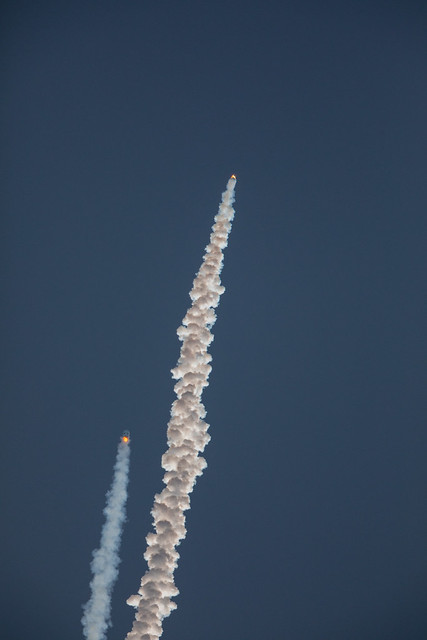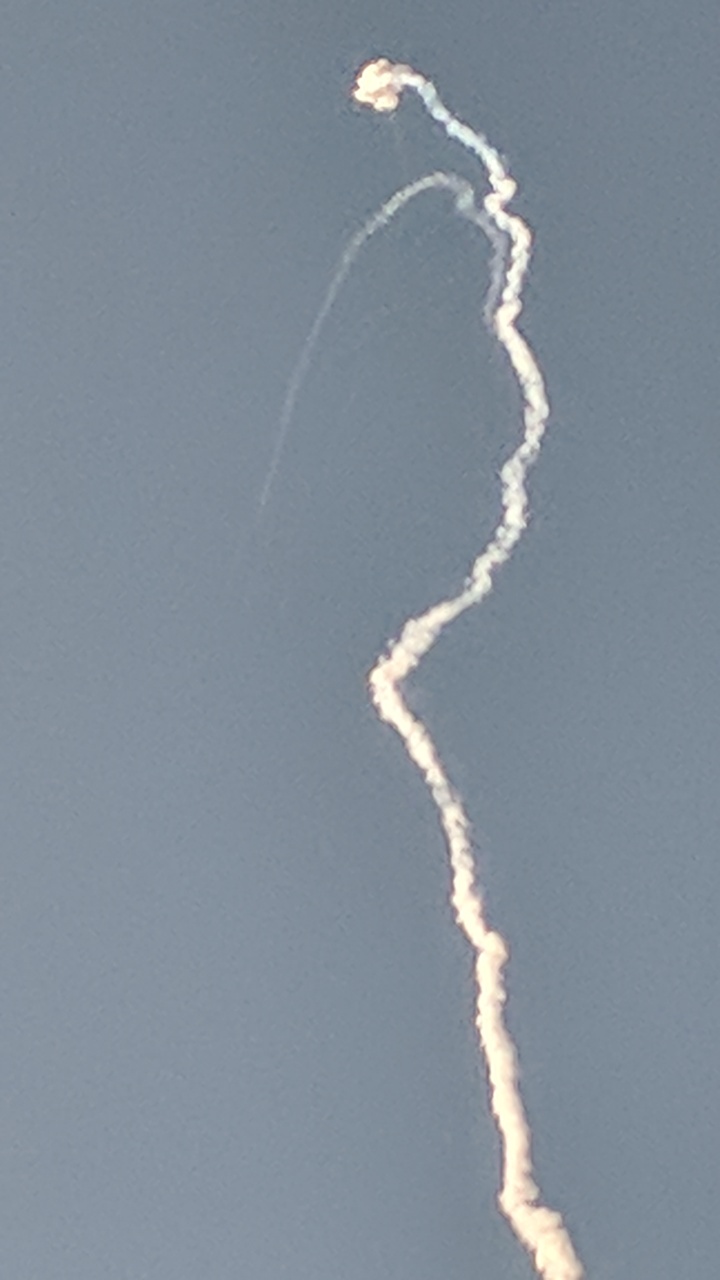ABORT TEST BOOSTER FACT SHEET
By Cliff Lethbridge

Abort Test Booster Launch, Photo Courtesy NASA
Classification: Research Rocket
Length: 36 Feet
Diameter: 18 Feet
Date Of First Cape Canaveral Launch: July 2, 2019
Date Of Final Cape Canaveral Launch: July 2, 2019
Number Of Cape Canaveral Launches: 1
Many onlookers suspected that a rocket had exploded, but that was not the case. Rather, NASA successfully test flew the Orion Launch Abort System (LAS) in a simulated launch failure with a launch from Launch Pad 46 on Cape Canaveral Air Force Station. Key flight objectives were to demonstrate abort capability at maximum aerodynamic pressure, determine the stability characteristics and reorientation dynamics of the Launch Abort System (LAS), obtain LAS structural loads and structural integrity data, obtain interface data for the LAS and crew module, demonstrate the LAS separation mechanism and gather information on the LAS external environment, including acoustics, aerodynamics, thermal data and acceleration.

LAS Speeds Away From ATB, Photo Courtesy NASA
A key component of the ATB was its powerplant, an SR118 rocket motor adapted from the first stage of a Peacekeeper missile. The rocket motor had a length of 334 inches and a diameter of 92 inches. The rocket motor was encased in an aerodynamic shell used to match the diameter of the Orion crew module. The ATB produced about 500,000 pounds of thrust at launch. The ATB was ballasted to make it heavier, lest it carry the LAS aloft too quickly. The ATB was procured by the Air Force Space and Missile Systems Center Rocket Systems Launch Program and built by Northrop Grumman.

LAS Firing, ATB And Crew Module Jettison, Photo Courtesy Lloyd Behrendt/Spaceline
Key components of the LAS, built by Lockheed Martin, included a lightweight composite fairing assembly that covered the crew module to protect it from the environment around it. The LAS had a launch abort tower with three separate motors. The abort motor fired with a thrust of 400,000 pounds and was designed to pull the crew module away from the launch vehicle on the launch pad or during ascent. The attitude control motor was fired to stabilize the crew module. Both the abort motor and attitude control motor were manufactured by Northrop Grumman. The jettison motor was fired to pull the LAS away from the crew module and was manufactured by Aerojet Rocketdyne.

LAS Firing And ATB Descent, Photo Courtesy Cliff Lethbridge/Spaceline
The ATB launched the Orion test capsule and LAS. At Launch Plus 55 Seconds when the vehicle was at an altitude of 31,000 feet, the abort sequence was initiated. The LAS abort motor was fired, pulling the crew module away from the ATB and gaining more than two miles in altitude in about 15 seconds. At an altitude of 43,000 feet, the LAS attitude control motor was fired in order to orient and flip the crew module to assure safe separation. At an altitude of 44,000 feet, the LAS jettison motor fired to pull the LAS tower assembly away from the crew module, releasing the capsule to descend toward the ocean. During the capsule’s descent, 12 data recorders were jettisoned, all of which were recovered at sea. Neither the crew module nor the LAS were recovered, as parachutes were not flown. NASA cited cost savings of not employing parachutes and extensive data already received from previous parachute tests.


